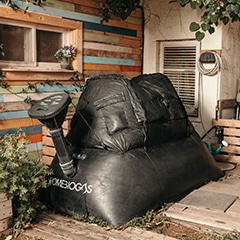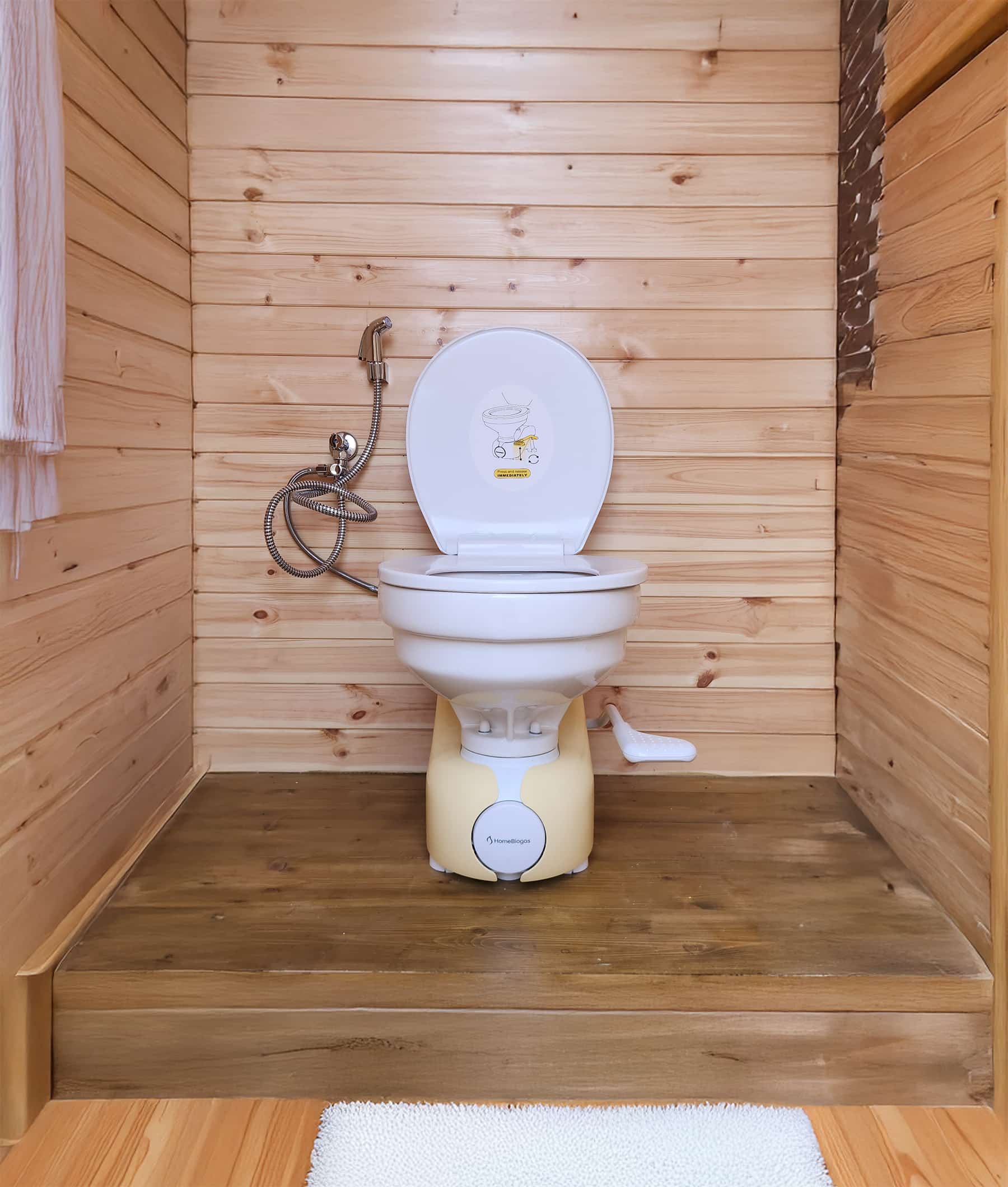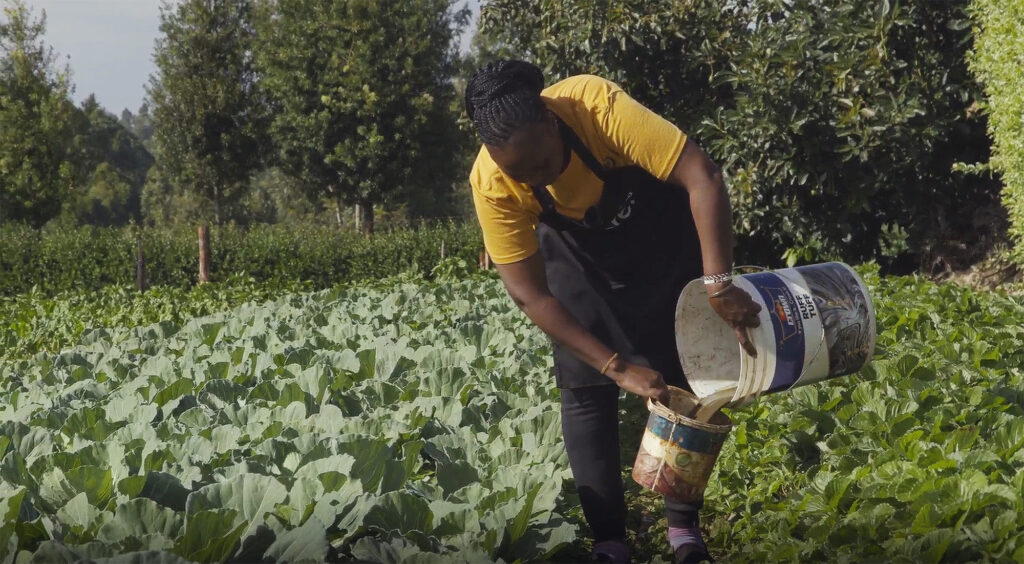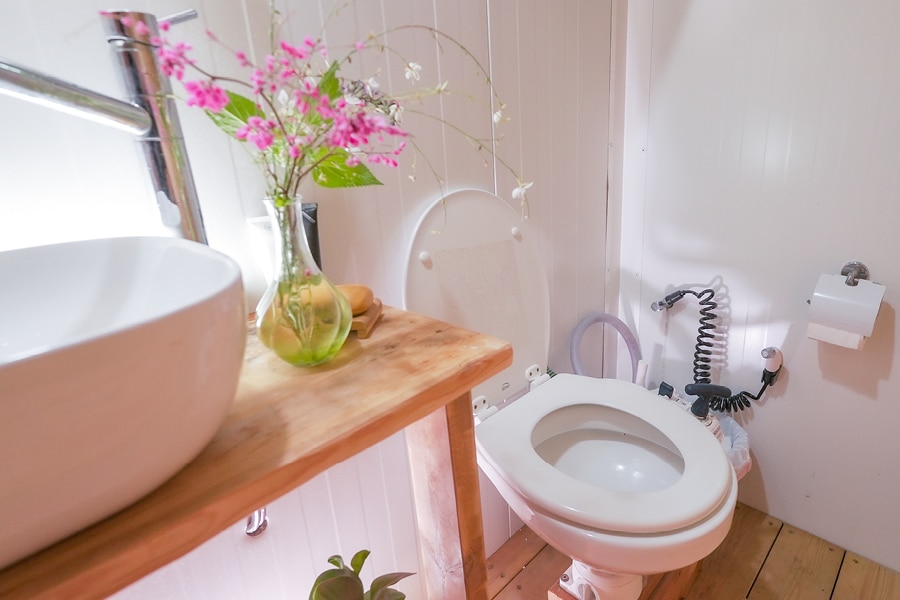
Importance of using sustainable toilets for the environment
Replacing your flushing toilet with a sustainable alternative impacts the environment in more than one way, and the most significant contribution regards water consumption. Sustainable systems like compost or low-flow toilets use little to no water for functioning, helping conserve important water resources. Why is this so important for the environment?
We flush away almost 30% of the water we consume indoors. Beyond large water bills, this habit can strain local water resources. Moreover, in some areas, it also raises the risk of water pollution if untreated wastewater ends up in rivers, lakes, or groundwaters.
Putting this into perspective, using smaller amounts of water for flushing or using dry toilets will significantly reduce the need for water treatment. Consequently, less energy goes into treating wastewater through biological and chemical processes before it returns to the environment.
Overall, sustainable toilets mean fewer pathogens released into the environment and reduced need for expensive, energy-consuming wastewater treatments, with a significant long-term impact on the environment.
What makes a toilet sustainable?
For a toilet to be sustainable, it must manage waste without harming the planet, biodiversity, or the people who use it. Ideally, the system requires minimum nonrenewable resources or relies on green energy.
Simply put, a toilet can be labeled as sustainable if:
- It’s an effective waste management solution that doesn’t release waste and pathogens into the environment.
- It follows health and safety rules and regulations for managing human waste.
- It uses little water per flush (1.28 – 1.6 gallons/4.8 – 6 liters) or doesn’t need water.
- It functions without large amounts of energy from fossil fuels.
- It’s hygienic and accessible while offering a private setting for dignified usage.
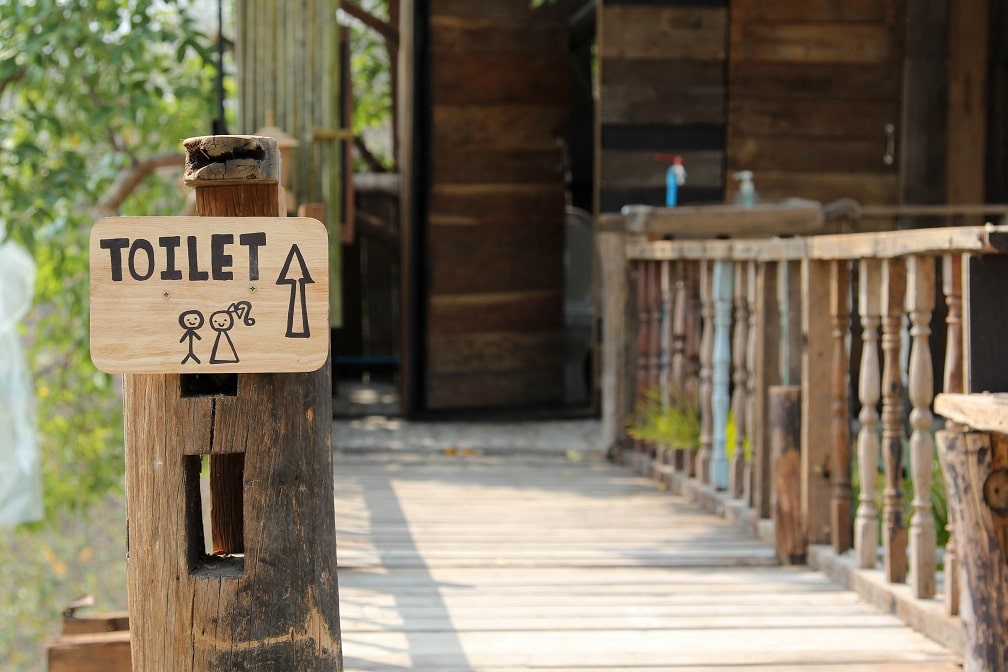
What are the different types of sustainable toilets?
As technology evolves and the need for better sanitation worldwide increases, many startups propose innovative bio-toilets and cost-effective waste management solutions. Here are some of the most popular and easy-to-install options currently available, although the list is not exhaustive.
Dual-flush and low-flow single-flush toilets
These models can be considered sustainable only compared to traditional high-flow toilets because their designs allow users to limit water usage per flush. However, considering other options, these toilets still use too many resources for flushing and treating wastewater.
Pressure-assisted toilets
Pressure-assisted toilets use compressed air to help flush the waste from the bowl. The system requires less water as it uses the pressure of the compressed air to obtain a powerful flush and clean the bowl effectively. It’s primarily used in commercial settings, but domestic versions are also available.
Incinerating toilets
The name is self-explanatory. Incinerating toilets burn waste at high temperatures. The downside is the large amount of energy required to turn human waste into ash. So, for a fully sustainable waste management system, you also need a green power source, such as solar panels.
Composting toilets
Composting toilets are often used at campsites, glamping sites, and off-grid areas where homeowners cannot access centralized wastewater treatment systems. They’re usually the top choice because they’re easy to use and maintain. Moreover, they consume significantly fewer water resources and have a low risk of contaminating underground water with human waste. Moreover, composting toilets produce compost, which supports plant growth, enriches the soil, and reduces the need for synthetic fertilizers.
Biogas toilets
Similar to composting toilets, biogas toilets recycle human waste. Not only do they prevent it from ending in landfills and contaminating water sources, but they also produce green energy. A biogas toilet includes a biodigester — a sealed environment where anaerobic bacteria break down waste and turn it into biogas a. This system limits water usage and provides an alternative energy source for heating and cooking.
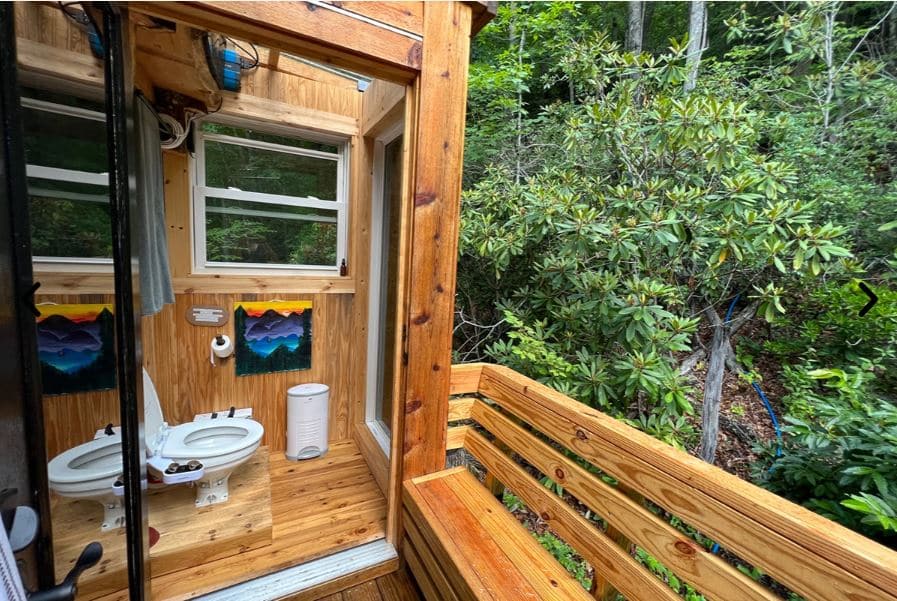
How to maintain a sustainable toilet
Maintenance will vary with the waste management system you opt for. For example, if you use a composting toilet, you must clean and empty the compost chamber regularly, while an incinerating toilet requires you to dispose of the ashes.
Still, some maintenance best practices apply to all sustainable toilets:
- Use natural cleaning products instead of harsh chemicals to minimize the toilet’s environmental impact.
- Never use a toilet to dispose of non-biodegradable items such as wipes, sanitary products, and dental floss.
- Opt for recycled toilet paper to reduce waste.
- Ensure your toilet has proper ventilation to remove moisture and odors from the bathroom.
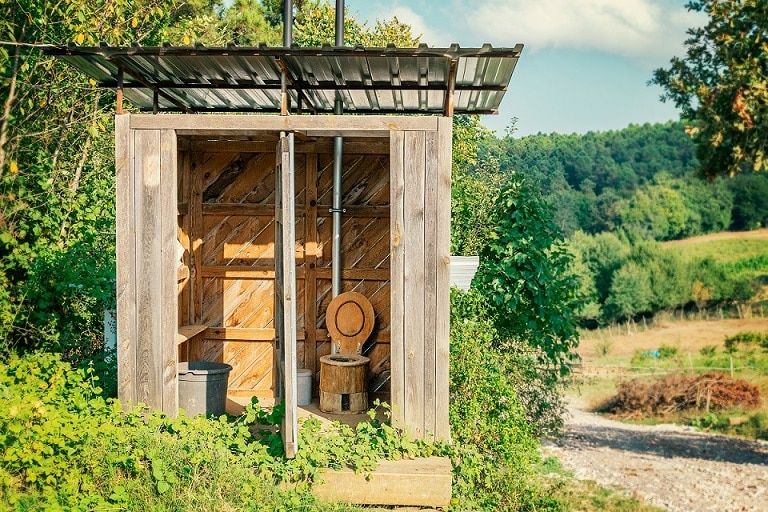
How to select the best sustainable toilet?
The first thing to consider when choosing a sustainable toilet is your location because regulations and existing infrastructure depend on it. These are all elements that will significantly influence your decision.
If you can access running water and a sewage system, eco-friendly flushing toilets could be a great choice. You get to save thousands of gallons of water annually and keep your costs down without significant lifestyle changes.
On the other hand, if you’re tired of large water bills or planning to live off-grid, a composting toilet could be a better option. Furthermore, if you have a backyard, you can level up the change and install a biogas toilet system to turn your waste into green energy.
Another consideration is the materials. Traditional porcelain toilets are durable and easy to clean but also heavy and require a lot of energy to manufacture and transport. You also want to consider the toilet’s overall lifespan and whether the manufacturer provides any guarantees to ensure that your purchase will last for years.
Last but not least, consider your budget. Many sustainable toilets, especially composting and incinerating models, come with high upfront costs. The investment will pay off in the long run, but it’s still an expense that might impact your budget.
HomeBiogas offers various sustainable toilets
HomeBiogas revolutionizes the concept of sustainable living with innovative waste management solutions. Every version of the HomeBiogas Bio-toilet kit is eco-friendly, efficient, and cost-effective, providing a low-maintenance system that enables users to turn human waste into biogas with minimum effort, and with no need for running water or a sewage system.
Plus, something as simple as recycling your waste can further reduce your carbon footprint — you can use the biogas for cooking or heating to lower your dependence on fossil fuels. At the same time, the effluent enriches the soil and supports plant growth, eliminating the need for synthetic fertilizers.
The HomeBiogas Bio-toilet kit includes a biodigester that uses anaerobic digestion to convert human waste into cooking gas for a 100% sustainable solution. And the toilet’s traditional design makes it suitable for bathrooms of all styles and sizes. Once installed, the system functions like any other toilet, making this bio-toilet an ideal solution for any household looking to reduce its carbon footprint.
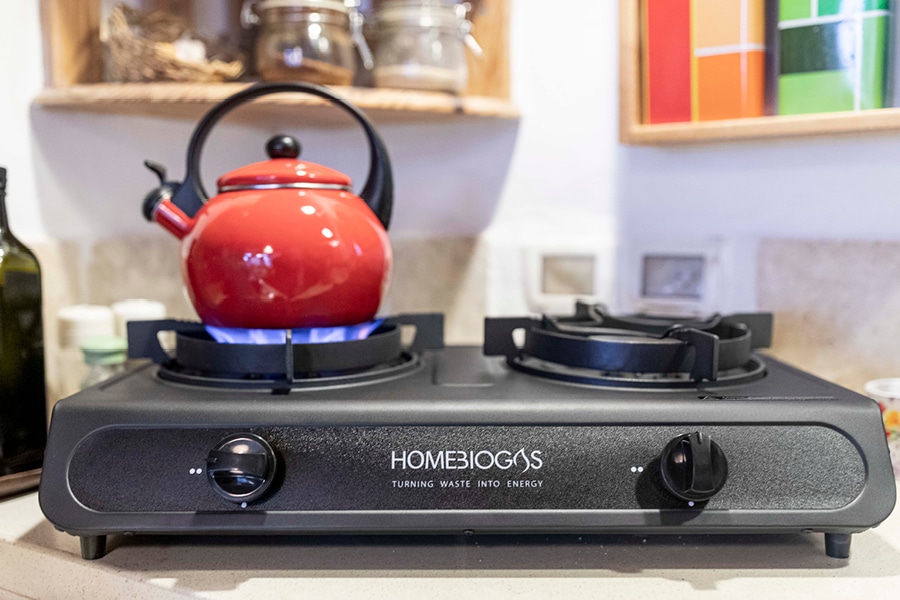
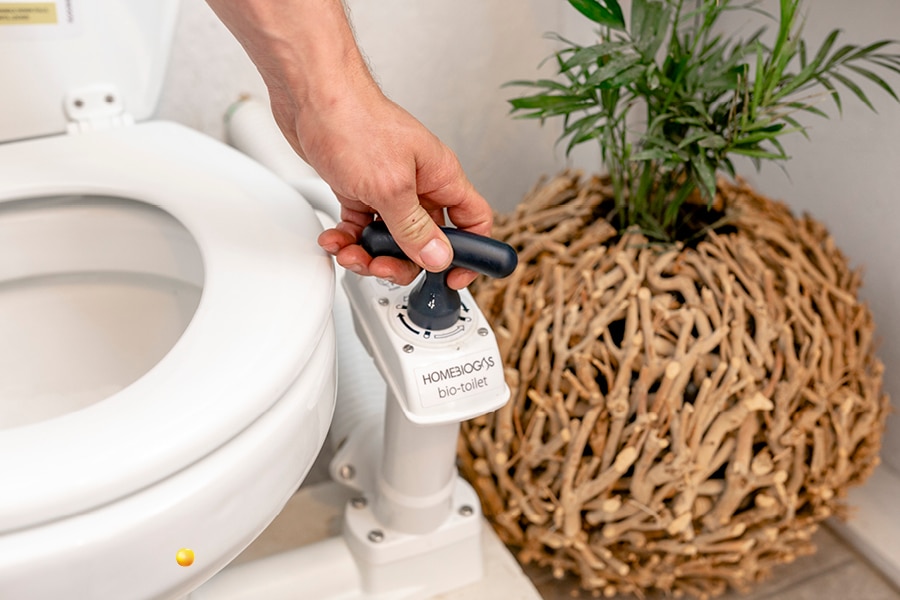
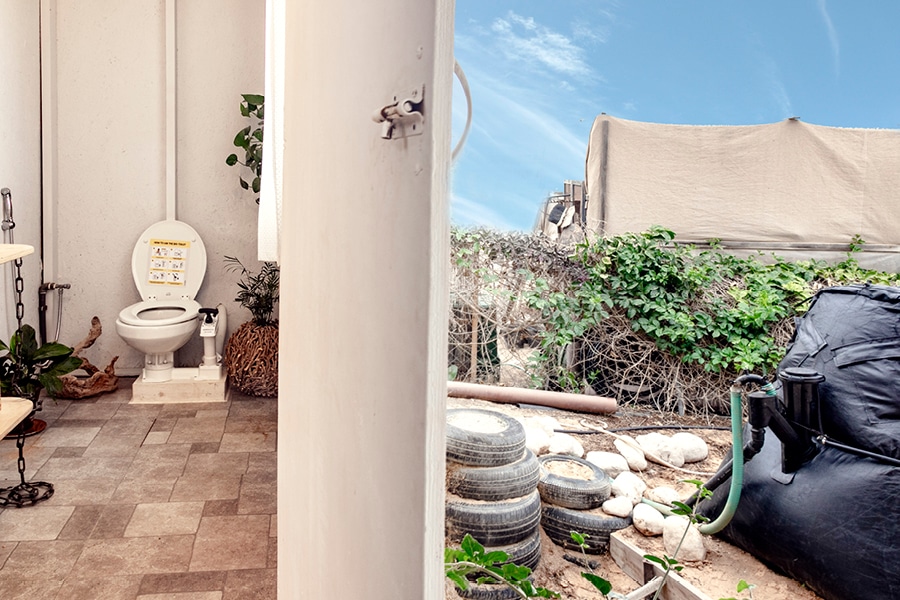

Final thoughts
Switching to a sustainable toilet is a small change that doesn’t always come cheap. Plus, changing your lifestyle can be challenging at first because most sustainable toilets require more maintenance than a traditional flushing toilet.
Still, the extra effort is worth it if you avoid creating wastewater. While not necessarily the first thing that comes to mind when planning sustainable home changes, an eco-friendly toilet can significantly impact your carbon footprint. Opting for a sustainable toilet will help reduce water and energy consumption, as less wastewater will require intensive treatment before being released into the environment.
